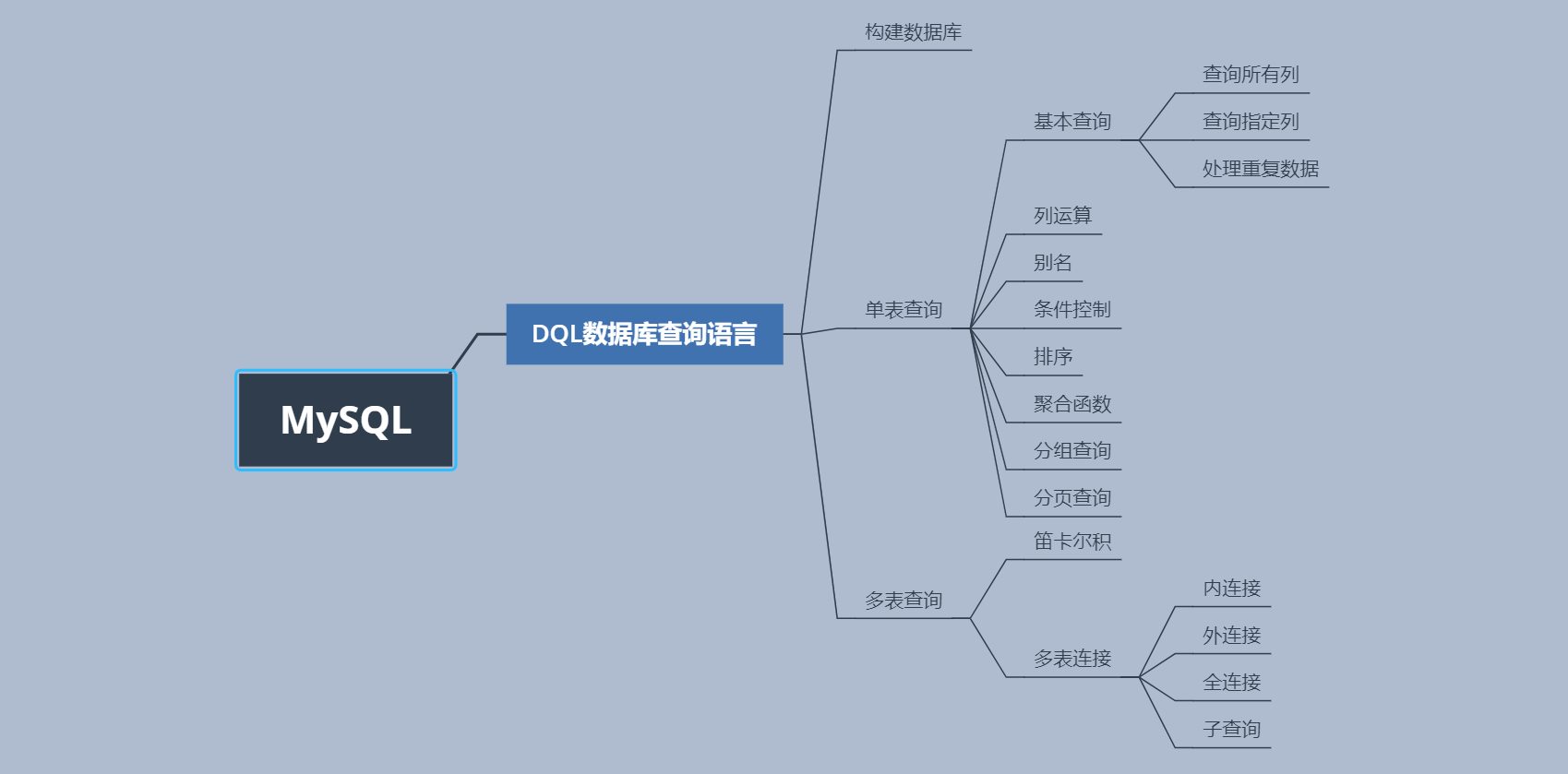2022-08-16 第二组刘禹彤 学习笔记
打卡33天

###学习内容
重点,DQL是我们每天都要接触编写最多也是最难的SQL,该语言用来查询记录,不会修改数据库和表结构。
构建数据库
创建一张student表:
DROP TABLE IF EXISTS student;
CREATE TABLE student (
id INT(10) PRIMARY KEY,
`name` VARCHAR(10),
age INT(10) NOT NULL,
gender VARCHAR(2)
);
构建一张course表:
DROP TABLE IF EXISTS course;
CREATE TABLE course(
id INT(10) PRIMARY KEY,
`name` VARCHAR(10),
t_id INT(10)
);
构建一张teacher表:
DROP TABLE IF EXISTS teacher;
CREATE TABLE teacher(
id INT(10) PRIMARY KEY,
`name` VARCHAR(10)
);
构建一个score表:
DROP TABLE IF EXISTS score;
CREATE TABLE scores(
s_id INT(10),
score INT(10),
c_id INT(10),
PRIMARY KEY(s_id,c_id)
);
表格填充数据:
insert into student (id,name,age,gender)VALUES(1,'小明',19,'男'),(2,'小红',19,'男'),(3,'小刚',24,'男'),(4,'小龙',11,'男'),(5,'小丽',18,'男'),(6,'小军',18,'女'),(7,'小航',16,'男'),(8,'小亮',23,'男'),(9,'小杰',22,'女'),(10,'小虎',21,'男');
insert into course (id,name,t_id)VALUES(1,'数学',1),(2,'语文',2),(3,'c++',3),(4,'java',4),(5,'php',null);
insert into teacher (id,name)VALUES(1,'Tom'),(2,'Jerry'),(3,'Tony'),(4,'Jack'),(5,'Rose');
insert into scores (s_id,score,c_id)VALUES(1,80,1);
insert into scores (s_id,score,c_id)VALUES(1,56,2);
insert into scores (s_id,score,c_id)VALUES(1,95,3);
insert into scores (s_id,score,c_id)VALUES(1,30,4);
insert into scores (s_id,score,c_id)VALUES(1,76,5);
insert into scores (s_id,score,c_id)VALUES(2,35,1);
insert into scores (s_id,score,c_id)VALUES(2,86,2);
insert into scores (s_id,score,c_id)VALUES(2,45,3);
insert into scores (s_id,score,c_id)VALUES(2,94,4);
insert into scores (s_id,score,c_id)VALUES(2,79,5);
insert into scores (s_id,score,c_id)VALUES(3,65,2);
insert into scores (s_id,score,c_id)VALUES(3,85,3);
insert into scores (s_id,score,c_id)VALUES(3,37,4);
insert into scores (s_id,score,c_id)VALUES(3,79,5);
insert into scores (s_id,score,c_id)VALUES(4,66,1);
insert into scores (s_id,score,c_id)VALUES(4,39,2);
insert into scores (s_id,score,c_id)VALUES(4,85,3);
insert into scores (s_id,score,c_id)VALUES(5,66,2);
insert into scores (s_id,score,c_id)VALUES(5,89,3);
insert into scores (s_id,score,c_id)VALUES(5,74,4);
insert into scores (s_id,score,c_id)VALUES(6,80,1);
insert into scores (s_id,score,c_id)

